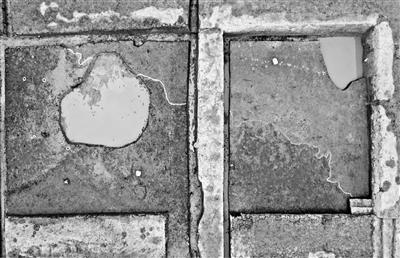The earliest known large-scale ancient rice field discovered in my country
From about 6,700 to 4,500 years ago, a relatively complete road network and irrigation system have been formed
News from our newspaper (reporter Cui Yifei) Yesterday, the State Administration of Cultural Heritage held an important progress meeting for the "Archaeological China" major project. At the meeting, the archaeological excavation of the "Ancient Paddy Field at Shi'ao (ào) Site in Zhejiang Province" was reported. This is currently found in the world. It has the largest area, the earliest age, and the most well-documented large-scale rice field.
The Shi'ao site in Yuyao, Zhejiang, is a rice field of Hemudu culture and Liangzhu culture. The preliminary exploration area is about 900,000 square meters.
From 2020 to 2021, with the approval of the State Administration of Cultural Heritage, the Zhejiang Provincial Institute of Cultural Relics and Archaeology, Ningbo Cultural Heritage Management Research Institute, and Yuyao Hemudu Site Museum jointly conducted archaeological excavations.
A reporter from Beijing Youth Daily learned that the large-scale rice field remains of Hemudu Culture and Liangzhu Culture were excavated this time, dating back from 6700 to 4500 years.
Due to the small area of rice fields excavated in the Hemudu culture period, only a few paddy fields, ridges, and river ditch remains were discovered; during the Liangzhu culture period, the rice fields had a clear structure, and a "well"-shaped structure road network composed of raised ridges was discovered, as well as river channels, canals, irrigation and drainage. The irrigation system composed of mouths identified four fields with an area of about 750, 700, 1900, and 1300 square meters, and unearthed the rim of the pottery cauldron, the fin-shaped tripod feet, the bottom of the flat-bottomed tank and the stone knife, stone adze (bēn), and stone. Plow fragments and other utensils, a damaged canoe was buried in the ridge.
After testing, the piles of rice fields contain more rice cobs, glumes, and rice field-associated weeds.
The results of phytolith analysis show that the density of rice phytoliths in the accumulation of paddy fields is much higher than the identification standard of ordinary ancient paddy fields.
According to the report at the meeting, the ancient rice field at the Shi'ao site is currently the largest, oldest, and most well-documented large-scale rice field in the world.
A relatively complete road network and irrigation system have appeared in the rice fields of Liangzhu Culture. The origin of this large-scale rice field may be as early as 6,500 years ago.
This discovery shows that rice farming is an important economic support for the social development of Hemudu culture to Liangzhu culture, and further deepens the understanding of prehistoric socioeconomic development in the lower reaches of the Yangtze River.
The meeting focused on "important archaeological discoveries and research progress in the Neolithic Age. In addition to the ancient rice fields at the Shi'ao site, the Yingdeyan Mountain Village Site in Guangdong, the Nanzuo Site in Qingyang, Gansu, the Geyachuan Site in Zhangjiachuan, and the Deng The archaeological progress of the Caogouliang site shows the origin of Neolithic culture at different stages in the Yellow River Basin, Yangtze River Basin and Pearl River Basin.
Photo courtesy/National Cultural Heritage Administration

